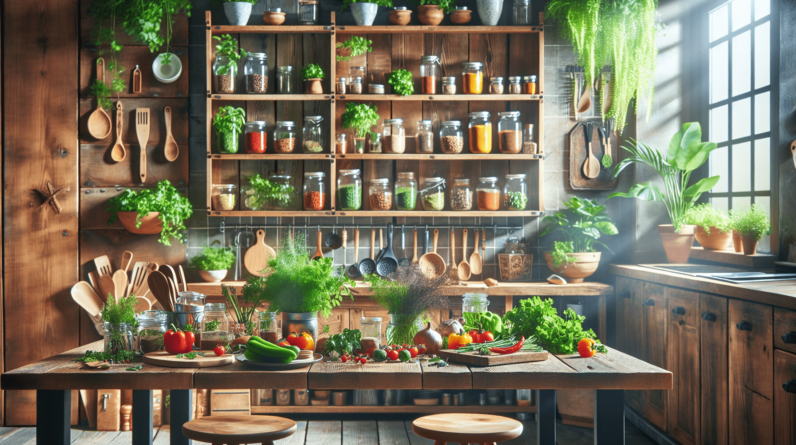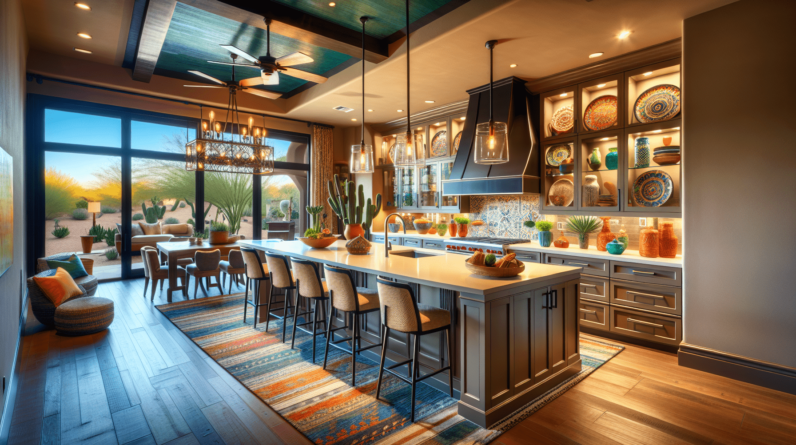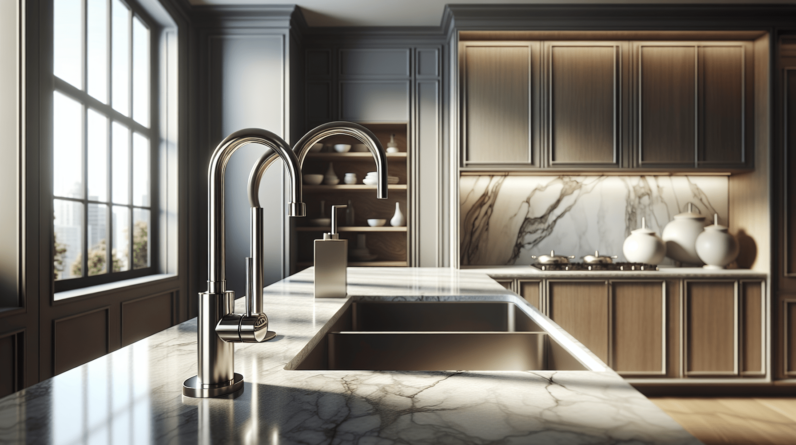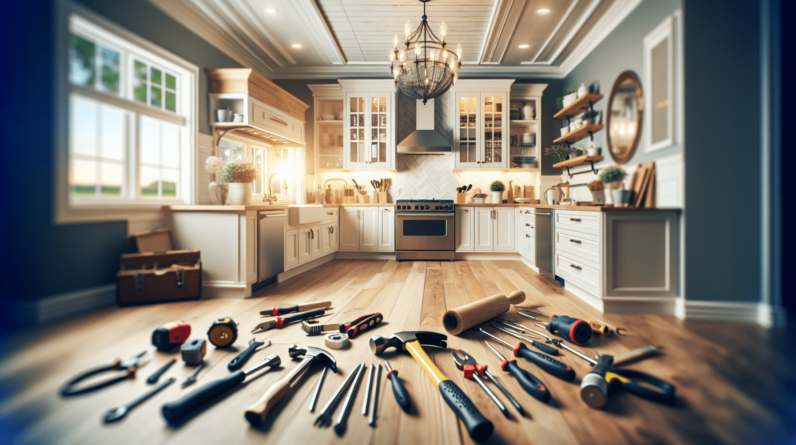
Have you ever thought about how a kitchen remodel could transform your home? Your kitchen is often the heart of your home, where meals are prepared, laughter is shared, and memories are made. In Los Angeles, where style meets functionality, a kitchen remodel can truly enhance your living experience. Let’s discuss what you need to know about kitchen remodeling in Los Angeles.
Why Remodel Your Kitchen?
Remodeling your kitchen is not just about updating your style; it’s about improving functionality and increasing the value of your home. A well-designed kitchen can offer better workflows, energy efficiency, and a more enjoyable cooking environment. Plus, if you ever decide to sell your home, a remodeled kitchen can attract more buyers and increase your asking price.
Increased Home Value
One of the primary reasons homeowners choose to remodel their kitchens is to boost the value of their properties. In a competitive real estate market like Los Angeles, a beautiful, modern kitchen can set your home apart.
-
Return on investment (ROI): Kitchen remodels generally have one of the highest ROIs among home renovations. On average, you can expect to recoup around 70-80% of your remodeling costs when selling your home.
-
Desirable features: Potential buyers often look for updated appliances, ample storage, and open-concept designs. Incorporating these elements can make your home more attractive.
Improved Functionality
Is your kitchen too cramped or outdated for your needs? A remodel allows you to rethink the layout and improve the overall functionality of the space.
-
Better workflow: A remodel can help you create a more efficient work triangle—where your stove, sink, and refrigerator are located in a convenient layout. This design saves time and effort while you’re cooking.
-
Storage solutions: You may find that your current kitchen lacks sufficient storage. By adding cabinets, pantry space, or even an island with drawers, you can minimize clutter and organize your kitchen better.
Setting a Budget for Your Kitchen Remodel
Before you even start dreaming about your new kitchen, it’s crucial to set a realistic budget. Remodeling can quickly become expensive if you’re not careful, so let’s look at how to establish a budget that works for you.
Determine Your Financial Limits
How much can you comfortably spend on your kitchen remodel?
-
Assessment of savings: Take a close look at your savings and decide how much you want to allocate to the remodel.
-
Financing options: If your savings don’t cover the total cost, you might consider home equity loans, lines of credit, or personal loans, but weigh the pros and cons carefully.
Estimate Costs
Once you have an idea of your financial limits, it’s time to research the estimated costs associated with your remodel.
Typical Costs Involved in Kitchen Remodeling
| Item | Cost Range |
|---|---|
| Cabinets | $5,000 – $25,000 |
| Countertops | $2,000 – $5,000 |
| Appliances | $3,000 – $10,000 |
| Flooring | $1,000 – $7,000 |
| Labor | $5,000 – $20,000 |
| Plumbing & Electrical | $1,500 – $5,000 |
Keep in mind that costs can vary widely based on materials used, the size of your kitchen, and labor costs in Los Angeles.
Prepare for Unexpected Expenses
It’s essential to have a cushion in your budget for unforeseen costs. Home renovations can be full of surprises, so setting aside an additional 10-20% of your budget can help you avoid stress later on.
Choosing a Style for Your Kitchen
Now that you have a budget, it’s time to think about the style of your new kitchen. The style you choose will influence everything from the materials you use to the layout of the space.
Popular Kitchen Styles in Los Angeles
Los Angeles boasts a variety of architectural styles, and your kitchen can reflect this diversity. Here are some popular styles to consider:
Modern
This style emphasizes clean lines and minimalism. You may find large, open spaces with sleek cabinets, high-tech appliances, and an uncluttered look.
- Materials: Stainless steel, glass, and concrete.
- Colors: Neutral palettes or bold accents.
Rustic
If you love a warm, inviting kitchen, a rustic style might be for you. This look combines natural materials, vintage elements, and a cozy atmosphere.
- Materials: Wood, stone, and vintage appliances.
- Colors: Earthy tones with pops of color.
Traditional
A traditional kitchen is timeless, combining classic designs with modern conveniences. This style often features intricate cabinetry and warm color palettes.
- Materials: Wood cabinets with detailed craftsmanship.
- Colors: Soft, warm hues.
Mixing Styles: Eclectic Designs
Not sure what style to choose? You don’t have to settle for one! Mixing styles can create a unique and personalized look for your kitchen.
-
Pairing Modern with Rustic: Imagine sleek appliances paired with reclaimed wood shelves to create a comfortable yet sophisticated space.
-
Classic Meets Contemporary: Combine classic styles with modern textures or appliances for a timeless yet fresh kitchen design.
Planning the Layout of Your Kitchen
Once you’ve decided on a style, it’s time to think about the layout. The layout should maximize space and improve functionality.
Common Kitchen Layouts
There are several common kitchen layouts that you can consider, depending on the size and shape of your space:
L-Shaped Kitchen
This layout features two walls that intersect in an L-shape, offering ample space for counters and appliances. This design works well for small to medium-sized kitchens and allows for an open floor plan.
U-Shaped Kitchen
A U-shaped kitchen offers three walls of cabinetry, creating a functional space ideal for cooking. It often provides excellent storage and counter space, making it perfect for avid cooks.

Galley Kitchen
This layout consists of two parallel counters with a walkway in between. It’s efficient for small spaces and often has everything within easy reach.
Island Kitchen
If you have the space, adding an island can enhance both storage and functionality. An island can serve as a food prep area, casual dining space, or a spot for friends to gather while you cook.
Consider the Work Triangle
A well-planned kitchen layout incorporates the work triangle concept, which connects the three primary work areas: the sink, stove, and refrigerator.
-
Efficiency: Keeping these three areas within easy reach minimizes the distance you need to walk while preparing meals.
-
Traffic Flow: Ensure that the layout allows for smooth movement, especially if your kitchen will be a gathering space for friends and family.
Selecting Materials and Finishes
Your choice of materials and finishes will greatly affect the overall look and feel of your kitchen. Let’s discuss some key elements to consider.
Cabinets
Cabinets set the tone for your kitchen and are usually one of the most significant investments. Consider the following:
- Style: Are you leaning towards sleek modern finishes or rich wood textures?
- Material: Wood, laminate, or metal may be options to explore, each with its unique characteristics.
Countertops
Countertops play a crucial role in both function and aesthetics. You’ll want to select durable materials that can handle the wear and tear of daily cooking.
- Granite: A popular choice known for its durability and elegant appearance.
- Quartz: Engineered stone that offers a vast range of colors and patterns.
- Butcher Block: For a warm, organic feel, consider using wood countertops, especially in rustic or country-style kitchens.
Flooring
Don’t overlook the importance of your kitchen flooring. It needs to be practical while also enhancing the style of your kitchen.
- Tile: Durable and easy to clean; available in various designs to complement your kitchen.
- Hardwood: Adds warmth, though it requires more maintenance.
- Vinyl: Offers a budget-friendly option that can mimic other materials’ appearance.
Backsplash
A backsplash can add a pop of personality to your kitchen. It’s a great opportunity to experiment with colors, patterns, and textures.
- Tile: Subway tiles are popular for a classic look, while intricate mosaic designs can add flair.
- Stone: Natural stone lends a rustic feel that works well in country-style kitchens.
Hiring Professionals for Your Kitchen Remodel
While some homeowners take the DIY route, many find that hiring professionals leads to better results. Here’s what you need to know about selecting contractors for your kitchen remodel.
Finding the Right Contractor
-
Referrals: Start by asking friends or family for recommendations. Personal experiences can help you find trustworthy professionals.
-
Online Research: Use websites like Yelp or Angi to read reviews and narrow down your options.
-
Check Credentials: Ensure that the contractor is licensed and insured. This protects you in case something goes wrong during the remodel.
Getting Estimates
Once you have a shortlist of contractors, reach out to them for estimates. Be clear about your preferences and budget, and ask detailed questions about their approach.
- Detailed Proposals: Look for estimates that outline the cost of materials, labor, and timelines to avoid surprises later.
Communication is Key
Good communication with your contractor is essential for a successful remodel. Ensure that you feel comfortable discussing preferences and concerns throughout the process.
- Regular Updates: Set a schedule for updates and progress checks. This keeps you informed and helps you address any issues as they arise.
Managing the Kitchen Remodel Process
The remodeling process can be overwhelming, but being organized can help you manage it with ease. Let’s look at how to handle the different phases of your remodel.
Planning Phase
During the planning phase, you’ll finalize your design choices, materials, and contractors. Take your time to ensure that all decisions align with your vision and budget.
- Timeline: Establish a rough timeline for when you want the remodel to be completed.
Demolition and Installation
Once the planning is complete, the demolition of your old kitchen will begin. This phase can be chaotic, so having a plan in place will help.
- Temporary Kitchen: Consider setting up a temporary kitchen space in another room, equipped with essentials like a microwave and a hotplate.
Final Touches and Reveal
After the installation is complete, it’s time for the finishing touches, such as painting walls, adding decor, and setting up appliances. This phase is exciting as your new kitchen comes to life!
- Final Walkthrough: Before you wrap things up, have a final walkthrough with your contractor to ensure everything meets your expectations.
Enjoying Your New Kitchen
Once the remodel is complete, it’s time to enjoy your newly transformed space. Take a moment to appreciate the effort you put into creating your dream kitchen.
Celebrate with a Gathering
Consider hosting a small gathering with family and friends to show off your new kitchen. This is a fantastic way to celebrate the completion of your remodel while making lasting memories in your updated space.
Establish New Routines
With your new kitchen in place, you might find that routines change. Cooking can become more enjoyable, and you’re likely to spend more time entertaining guests or enjoying family meals.
Regular Maintenance
To keep your remodeled kitchen looking its best, regular maintenance is essential.
-
Cleaning Surfaces: Create a routine for cleaning countertops, cabinets, appliances, and floors to maintain their appearance.
-
Checks and Repairs: Schedule periodic checks on plumbing, appliances, and electrical systems to catch any issues before they become major problems.
Conclusion
A kitchen remodel in Los Angeles can be one of the most rewarding home renovations you undertake. By understanding your style options, setting a realistic budget, hiring qualified professionals, and planning each phase carefully, you can create a kitchen that reflects your personality and meets your needs.
Embrace the opportunity to enhance not just your home’s aesthetics but also its functionality. Ultimately, a beautiful kitchen will enrich your daily life and create a welcoming space for years to come. Your dream kitchen is within reach—why not take the first step today?






